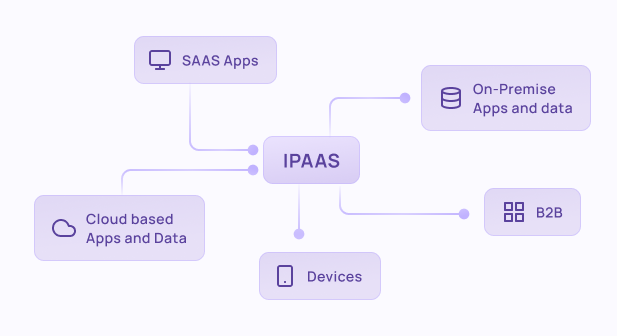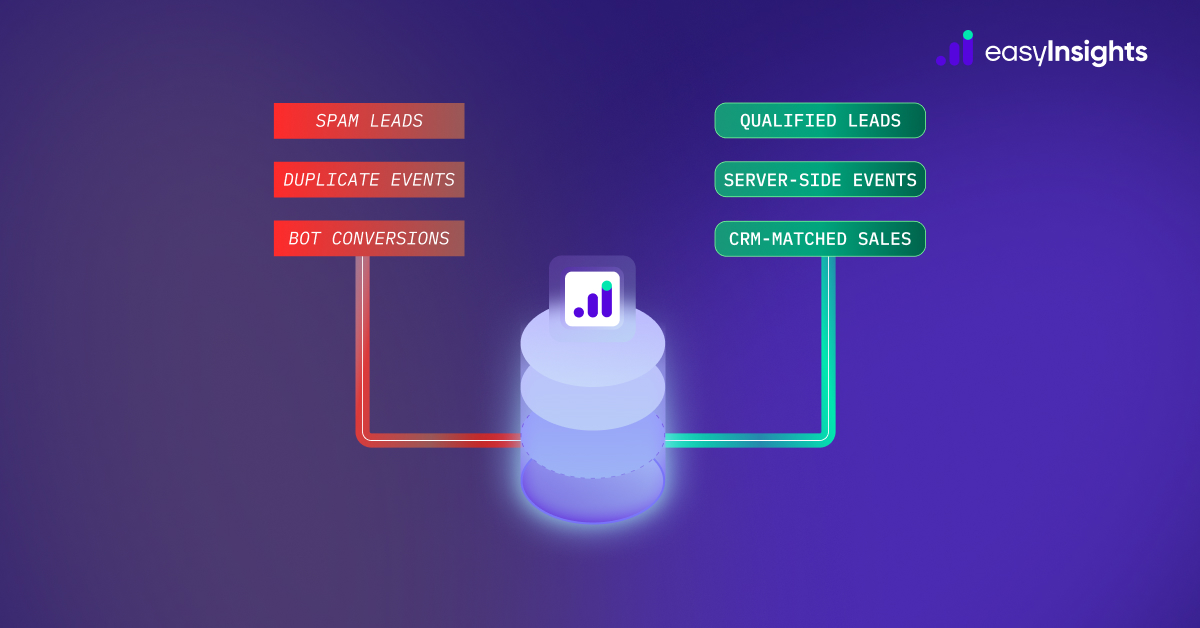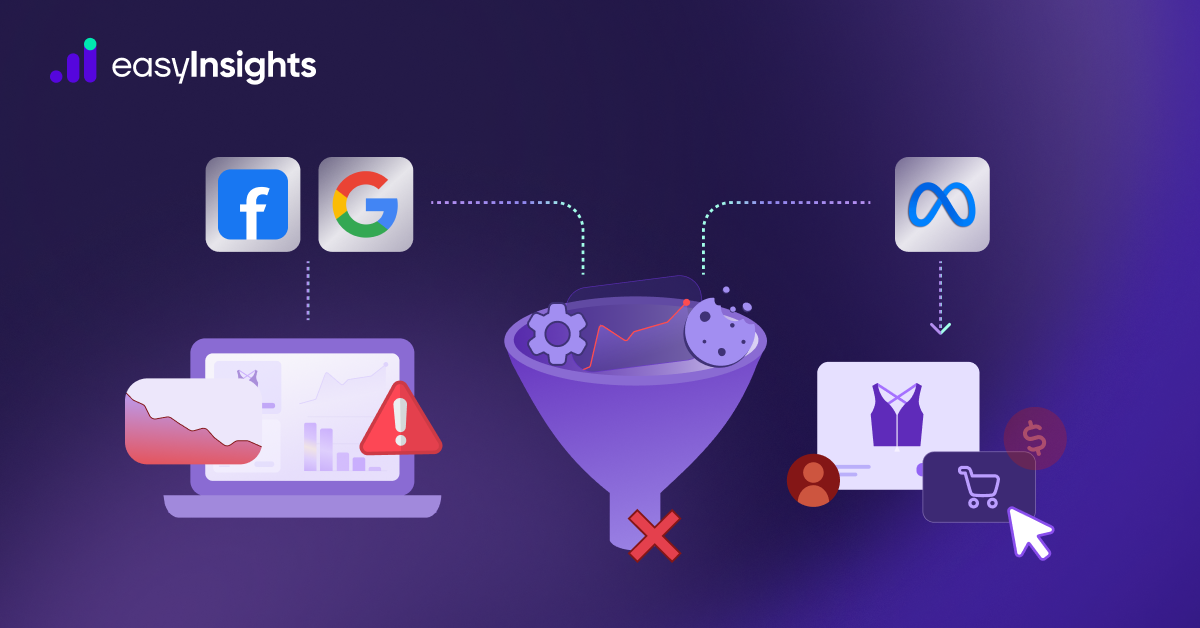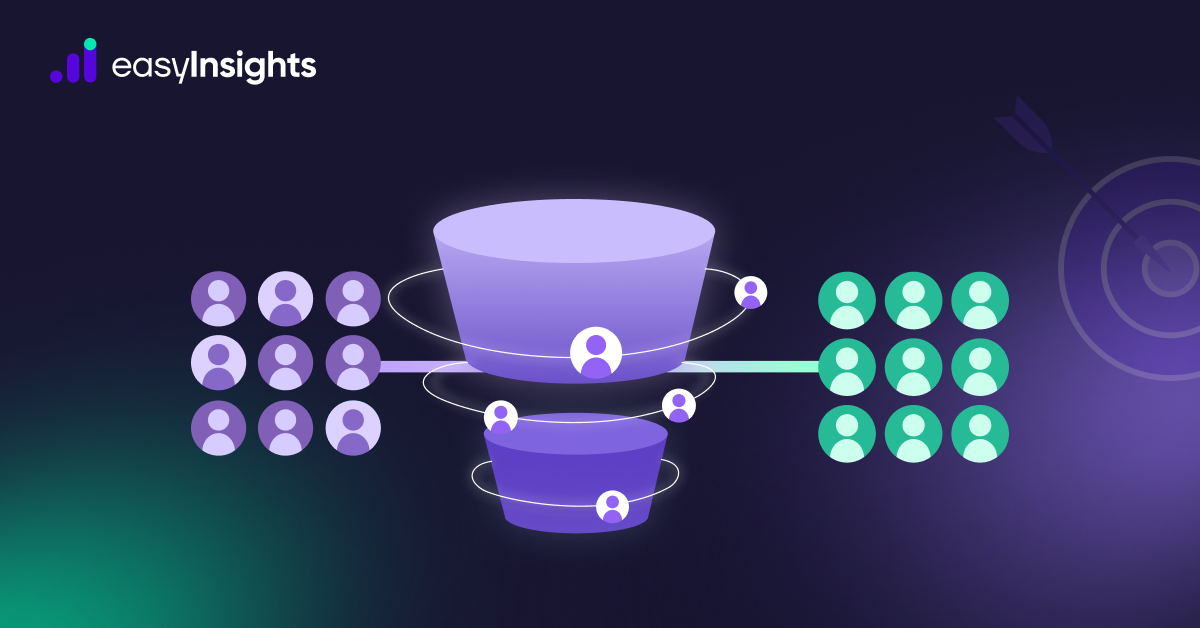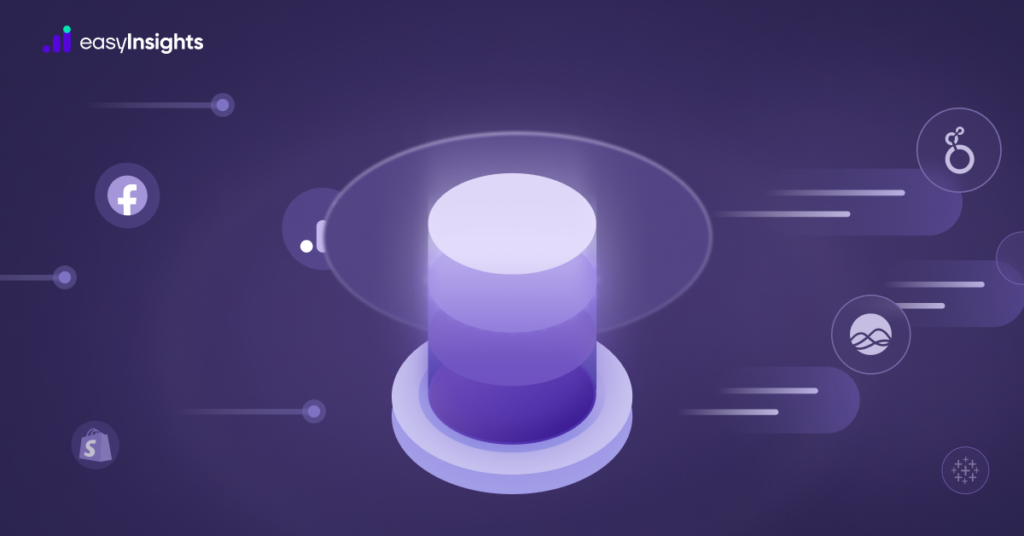
Imagine having all the customer data you need – but not being able to use it. That’s the reality for many businesses stuck with siloed data in warehouses that only analysts can access.
Data activation solves this problem.
It turns raw, stored data into actionable insights by syncing it with the everyday tools your teams already use – like CRMs, ad platforms, and email automation tools. This enables your marketing, sales, and product teams to take real-time, data-driven actions without waiting for data exports or custom dashboards.
Let’s break down what data activation is, how it works, and how top brands use it to power performance marketing.
Jump ahead to:
What Is Data Activation?
Data activation is the process of moving data out of storage and putting it to work. Specifically, it involves syncing modeled, analytics-ready data from your data warehouse into operational tools – so it’s actionable by non-technical users.
In simpler terms:
You already have data. Activation is how you use it.
This means marketers can:
- Build custom audiences
- Run hyper-personalized campaigns
- Trigger retargeting workflows
- Measure LTV or attribution accurately
And they can do it all without pinging the data team.
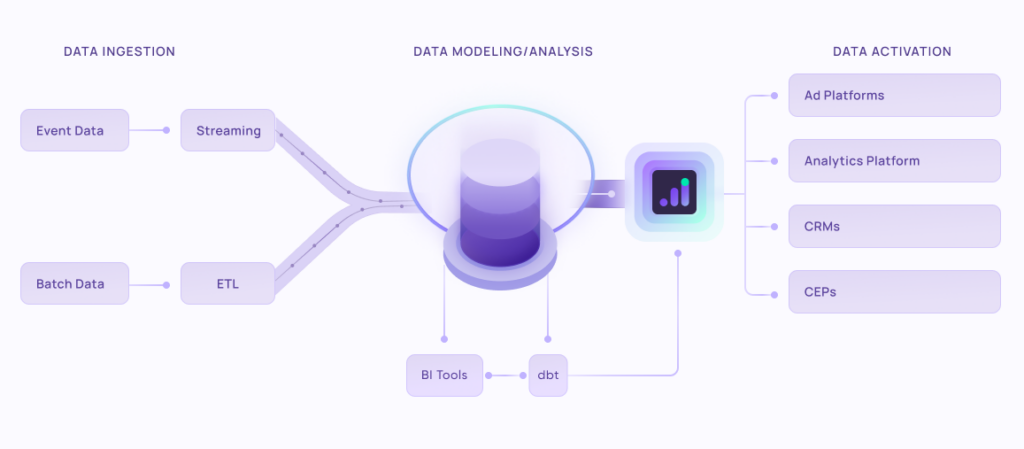
Additional Read: Data Democratization: Everything You Need to Know
How Does Data Activation Work?
From collecting data to actually making your decisions based on it, data activation can be broken down into a five-stage process. They are:
- Data Collection: Gathering diverse and relevant data from various sources is the foundation of data activation. This step involves accumulating comprehensive data sets from devices and software used for different business functions.
- Data Integration and Processing: This step involves combining data from different sources to create a unified database. It also includes cleaning and organizing the data to ensure accuracy, consistency, and usability. Proper data integration and processing are crucial for preparing the data for effective analysis.
- Data Analysis: Analyzing the integrated data to extract meaningful insights is at the core of data activation. This involves using analytical tools and techniques to identify patterns, trends, and correlations within the data. The insights drawn in this step form the basis for informed decision-making.
- Data Sync: Transformed and modeled data is then used to create comprehensive data views that offer insights into customer attributes like sign-ups, cart abandonments, LTV, number of sessions and their duration, etc. This data is then mapped back to the tools your teams use, like CRMs, Advertising tools, email automation software, etc.
- Decision Making: The final and most crucial step is applying the insights gained to real-world decisions and strategies. This could involve adjusting marketing approaches, refining operational processes, or developing new products or services based on data-driven insights.
It is important to note that data activation isn’t a one-time exercise but a continuous process. You must use insights and feedback gathered to refine and improve your strategies. That is the only way to ensure that your data activation strategy remains relevant and effective over time.
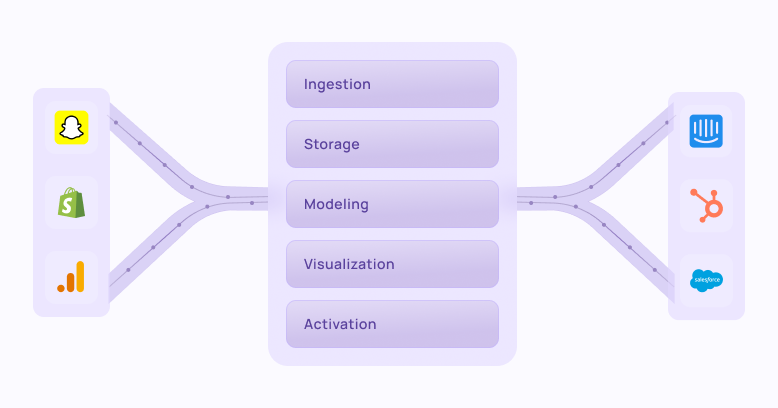
Data Activation for Marketers: Why It’s a Game-Changer
Marketers are among the biggest beneficiaries of data activation. Here’s why:
Old Way:
- Ask data team for a CSV of “churned users”
- Wait 2–5 days
- Manually upload to Google or Meta
- Data may be outdated
New Way (With Data Activation):
- Automatically sync “churned user” segment daily
- Use it in real-time for retargeting or email nurture
- No data team involvement required
Activated data lets you:
- Analyze campaign performance based on unified user journeys
- Retarget high-intent users in real time
- Personalize email campaigns with accurate LTV data
Additional Read: Farewell to Third-Party Cookies: Refining Retargeting Tactics
How Brands Activate Their Data?
The biggest hurdle in activating data is moving it out of the warehouse and mapping it back to relevant end-user applications. Data engineers have to integrate third-party APIs or create custom data connectors from scratch to create new data pipelines for each business app.
Engineers also rely on certain tools to streamline this process, which include:
1. Data Activation via Customer Data Platform
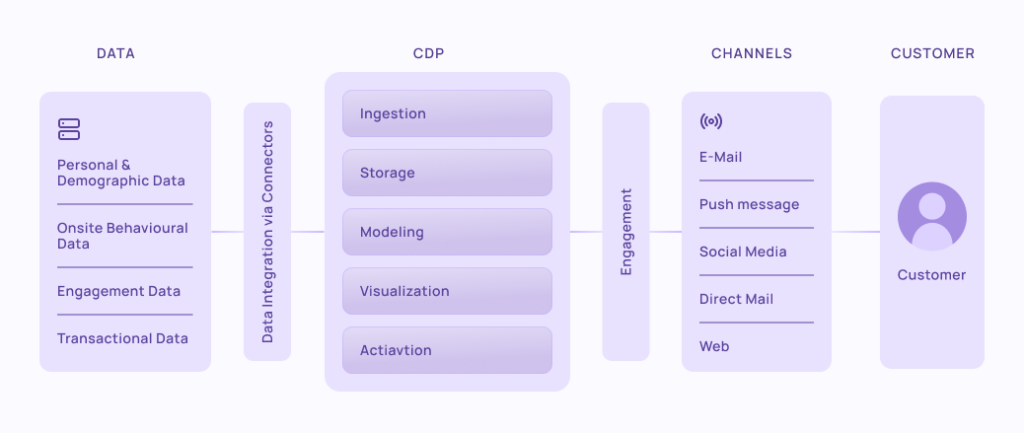
CDPs like Segment or Salesforce CDP centralize data and push it to marketing tools. Sounds great, but:
- They duplicate your warehouse, creating data silos
- Limited integrations = patchy coverage
- Data is anonymized, hurting identity resolution
Verdict: Useful, but limited. Not scalable or reliable for warehouse-native teams.
2. Integration As a Platform
Integration as a Platform or iPaaS is a suite of cloud services used to integrate various applications and data sources deployed across various environments.
While they aim to provide a better alternative to CDPs, they aren’t for your average marketer or sales rep. In order to integrate data from one tool to the other via iPaaS requires the use of custom code to create complex workflows. For that, you need specialized personnel, limiting the integrations’ access to only IT and engineering teams.
Apart from that, iPaaS solutions require investment in robust infrastructure and active management from an in-house team. They get expensive as you scale your integrations, making them a viable option only for large-scale enterprises.
3. Point-to-Point Integrations
Point-to-point or P2P integrations include the likes of Zapier and Tray. They act as middleware between software A and software B. This is a problem as it prevents you from leveraging data models and customer profiles stored in your data warehouse.
When working with such tools, you may need to create multiple connections between the apps for the various tasks you plan to accomplish. These connections rise exponentially as your tech stack scales, increasing not only the cost of using the P2P tool but also making it difficult to manage innumerable connections.
4. Reverse ETL Platforms
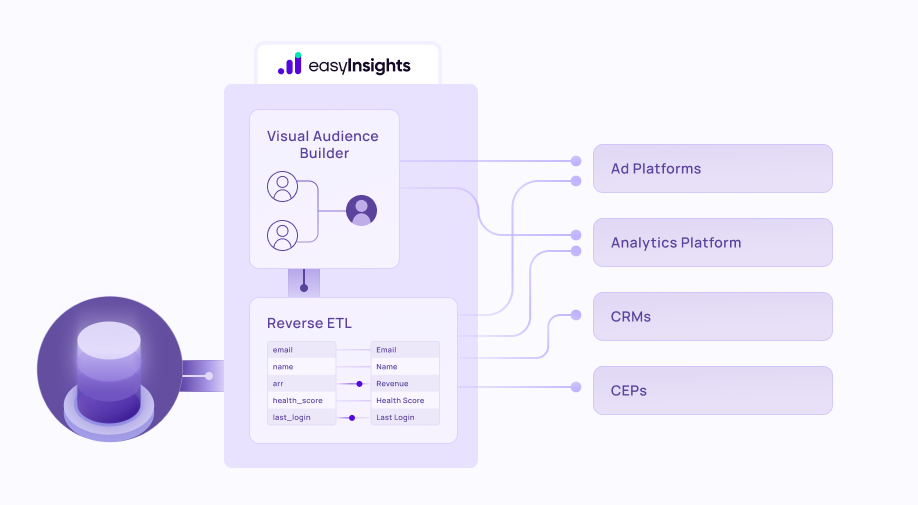
Reverse ETL tools (like Census, Hightouch, and EasyInsights) connect your warehouse to your tools.
Benefits:
- No duplicate data storage
- Pulls live data from warehouse
- Low-code/no-code interfaces for non-tech teams
- Supports custom attributes, metrics, and user segments
Verdict: The only approach that enables true warehouse-native data activation.
Additional Read: Why is Data Maturity Important?
Activate Your Business Data with EasyInsights
Data activation is an important step in data management for every organization aiming to attain data maturity. It requires a robust activation platform that is not only flexible but accessible to all. If you are looking for such a solution for your team, you must check out EasyInsights.
EasyInsights is an end-to-end data automation platform. It is the only tool you need for all your ETL and reverse ETL workflows. This platform automates data collection from over 50 business applications, funneling it directly into your data warehouse.
What sets EasyInsights apart is its user-friendly interface, designed to simplify the processes of cleaning, transforming, and creating comprehensive data views. Moreover, custom attributions and tailored integrations give a clear picture of campaign performances, source-driven acquisitions, and LTV.


